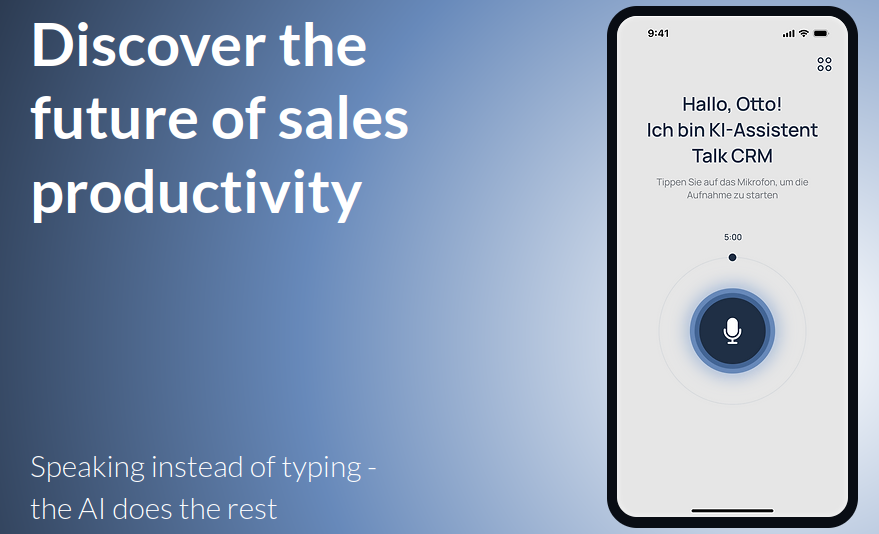AI in leadership: Using AI as your reflection coach

In today’s fast-paced world, effective leadership is about more than just making decisions—it’s about learning, growing, and continuously improving. Reflection is at the heart of this growth. It helps you assess your actions, understand your motivations, and plan for the future. But what if you had a coach to guide your reflection, help you ask the right questions, and ensure your conclusions are meaningful?
AI can become a trusted coach, helping you reflect with clarity and depth while keeping the ownership of insights firmly in your hands.
AI as a coach: Guiding your reflection
AI can act as your personal reflection coach, helping you structure the process and guiding you to explore perspectives you may not have considered. However, it’s important to remember that your reflection is your own. AI doesn’t replace your insights or conclusions—it simply helps you get there more effectively.
Here’s how AI can coach you during your reflective process:
- Choosing the right reflection method: Not all reflection is the same. AI can suggest approaches tailored to your situation, such as journaling, structured questioning, or scenario analysis. For example, it might propose, “Would you like to reflect on this situation using the 5 Whys technique to uncover root causes, or would you prefer to focus on lessons learned?”
- Raising powerful questions: AI can prompt you with thoughtful and probing questions like, “What values were you prioritizing in this decision?” or “How do you think your team perceived your actions?”
- Encouraging deeper exploration: AI can ask follow-up questions that challenge you to think more deeply. For instance, if you say, “I think I could have communicated better,” AI might ask, “What specific aspect of your communication could be improved—clarity, timing, or empathy?”
- Providing feedback loops: By helping you revisit your answers and refine your thoughts, AI ensures you’re not just scratching the surface but uncovering meaningful insights.

A personal example of AI as a reflection coach
Recently, I used AI to reflect on my leadership performance over the last three months, particularly in how I interacted with my colleagues. I began by posing this prompt to the AI:
The AI suggested starting with a structured approach and offered two methods:
- Success-and-gaps analysis, where I’d identify areas where I excelled and where gaps remain.
- The 5 Whys technique, to uncover the root causes of specific challenges.
I chose the success-and-gaps analysis, as it aligned with my goal of gaining a balanced perspective.
As I described my interactions, the AI guided me with probing questions like:
- “What do you think went well in your relationships with colleagues, and why?”
- “Where do you feel there were gaps, and what impact did they have on your team or outcomes?”
When I mentioned that some colleagues didn’t seem fully engaged in discussions, the AI challenged me:
- “What could you have done differently to create a more engaging environment?”
- “How clear were you in communicating expectations and goals during these conversations?”
This process led to a deeper realization: while I consistently encouraged collaboration, I hadn’t always ensured that my feedback and communication were tailored to individual colleagues’ needs and motivations.
Finally, the AI helped me identify 3 concrete action items to improve my leadership approach over the next three months:
- Create opportunities for open dialogue in team settings: Instead of relying solely on one-on-one check-ins, facilitate small-group discussions where colleagues can openly share their insights, feedback, and challenges. This fosters a more collaborative environment and allows diverse perspectives to surface, helping me better address team dynamics as a whole.
- Refine and clarify communication: Before any team discussion or initiative, take time to clearly define the goals, expected outcomes, and purpose. Check for alignment by asking the team for their understanding of the key points and making adjustments as needed. This ensures everyone is on the same page and reduces the risk of miscommunication.
- Personalize feedback as a peer, not just as a leader: While I was providing feedback and recognition regularly, it often came across as top-down. Moving forward, I will aim to deliver feedback with a peer-like tone, framing it as part of a mutual conversation rather than a directive. For example, instead of saying, “This is what you did well, and here’s what needs improvement,” I’ll approach it as, “What do you think went well here? Can I share my perspective, too?” This will help create a more collaborative dynamic and build stronger trust.
Prompts to guide your reflection with AI
Here are some practical prompts you can use to let AI guide your reflective process. These will help you pick the right method and dig deeper into your thoughts:
Selecting a reflection method
- “What’s the best approach to reflect on [specific situation]? Should I focus on identifying root causes, exploring lessons learned, or evaluating team dynamics?”
- “Can you guide me through a structured reflection method like the 5 Whys, a SWOT analysis, or journaling?”
Exploring a specific scenario
- “What factors contributed to the outcome of [specific event or decision]?”
- “What assumptions was I making during this situation, and were they accurate?”
- “What were the unintended consequences of my actions, and how can I address them in the future?”
Challenging your assumptions
- “What biases might have influenced my decision-making in this situation?”
- “Is there another perspective I haven’t considered? How might someone else view this?”
- “What feedback have I received from others about this situation, and how does it align with my reflections?”
Why the reflection is yours, not the AI’s
AI can ask questions, guide your thinking, and even suggest frameworks, but it’s essential to remember: the reflection is yours.
- You own the insights: The conclusions you draw must come from your understanding of the situation, your experiences, and your values. AI doesn’t know your context the way you do.
- You validate the accuracy: AI’s suggestions can be helpful, but you need to verify them and ensure they align with your reality.
- You take action: Reflection is only valuable if it leads to change. AI can’t act on your insights—you must.
Think of AI as a partner in your reflection journey. It doesn’t replace your judgment; it enhances your ability to explore and understand your thoughts more effectively.
Using AI as a reflection coach: A step-by-step guide
- Identify a topic or situation: Choose something you want to reflect on—whether it’s a decision, a leadership challenge, or a team interaction.
- Engage AI for guidance: Start by asking the AI for a method or framework to structure your reflection. For example, “What’s the best way to reflect on a team conflict?”
- Answer the questions honestly: Let the AI guide you with prompts, but remember to stay true to your own understanding.
- Refine your insights: Use AI’s follow-up questions to dig deeper into your thoughts.
- Document your conclusions: Summarize your reflections, validate their accuracy, and identify actionable steps to improve.
The role of AI in your leadership growth
Using AI as your reflection coach can help you uncover deeper insights, explore different perspectives, and improve your self-awareness. However, the true value lies in your ability to validate these insights, draw meaningful conclusions, and take action.
As a leader, reflection is your tool for growth, and AI is here to support—not replace—that process. By embracing this partnership, you can elevate your reflective practices and unlock your full leadership potential.